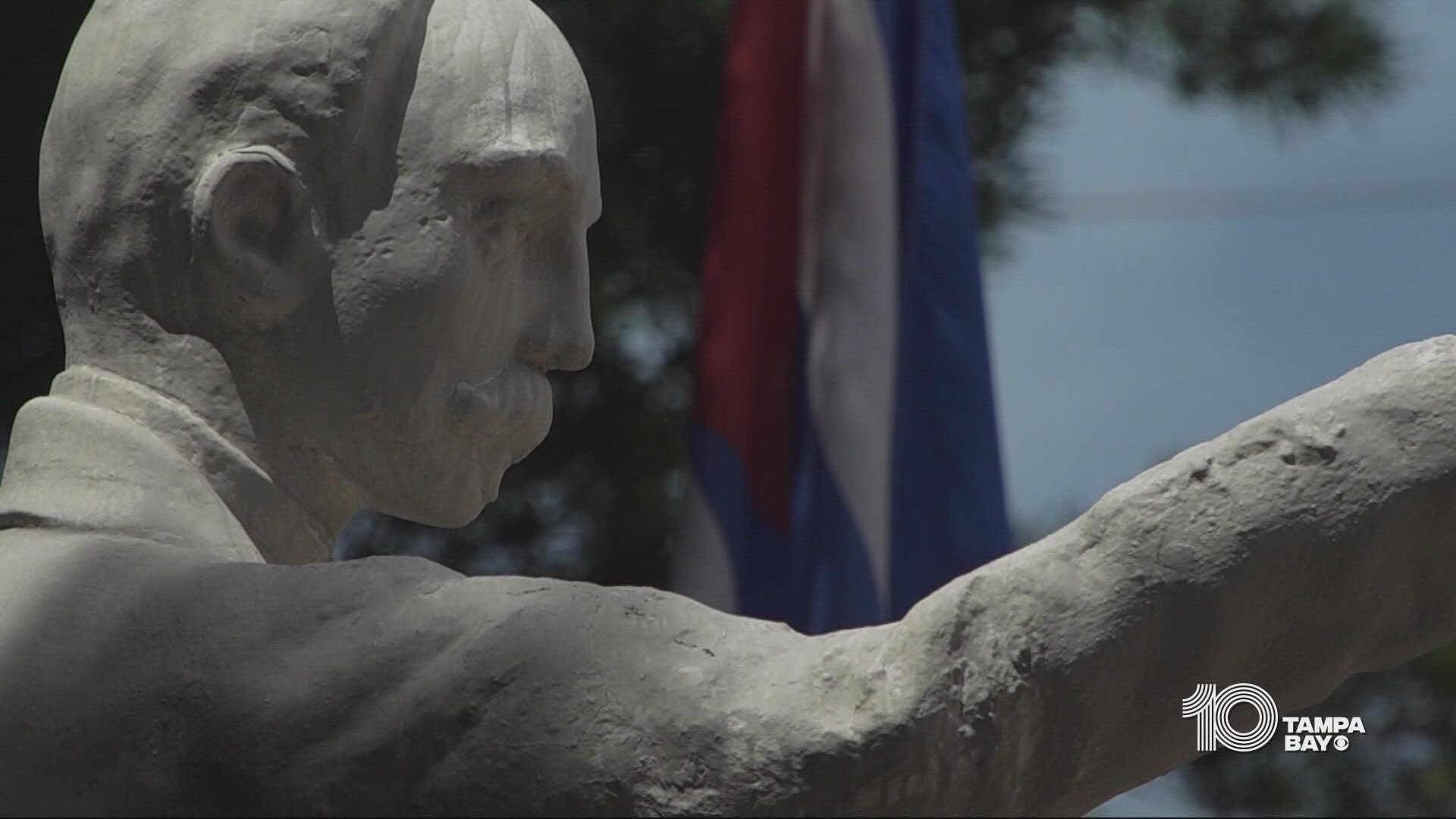TAMPA, Fla. — With one step, Wallace Reyes repeated a familiar line from his walking tour of Ybor City.
“Now you’re in Cuba,” he smirked as his left foot shuffled next to his right just past the gate of Jose Marti Park.
The park bears the name of a man who has been dubbed by history as the George Washington of Cuba. It sits in the heart of Tampa’s historic Ybor City neighborhood.
Inside the park are six bushes representing the provinces of Cuba, planted in soil that came from each province.
“OK, come this way,” said Reyes — a historian, cigarmaker and fourth-generation Ybor resident — as he happily walked his acquainted path through Ybor’s brick-paved streets with us on a steamy morning in late August.
Before cigars, Ybor City was just a village of 600 people, Reyes said, “in the middle of nowhere.” But once the industry arrived in the late 1800s, the population quickly ballooned to 2,500 within a year, he said.
It was that robust cigar industry that would go on to help fund the Cuban Revolution.
Vincente Martinez was the Spanish entrepreneur who brought his cigar-making business to Ybor. But he sympathized with Cuban revolutionaries like Marti, Reyes said.
While Martinez might’ve brought the workers to Tampa’s Ybor City, it was Marti who motivated them — many who were Cuban — to help fund the fight for freedom back home.
“There was no way Cuban independence would be advanced without that [money].”
The Cuban nationalist, poet and philosopher came to Tampa 21 times and famously, in 1895, sent the instructions of the Revolution from New York to Tampa rolled in a cigar.
“The idea is to infiltrate instructions with the cigar to the rebels in Cuba,” Reyes said.
From the steps where Marti spoke to inspire support for the Revolution, to the story behind the creation of one of our area’s most iconic sandwiches, the Cuban connection runs deep in these streets.
“Eduardo Manrara, in 1894, discovered that Cigar makers, after lunch, they were less productive,” Reyes said explaining how the Cuban sandwich came to be.
“He said, ‘we have to change the dining habits of the cigar makers.’ They ate too much.”
Ybor City might be known to most as Cigar City, but look a little closer and you’ll find, “it’s the birthplace of the independence of Cuba,” Reyes said.
“The cradle of the Cuban Revolution.”

